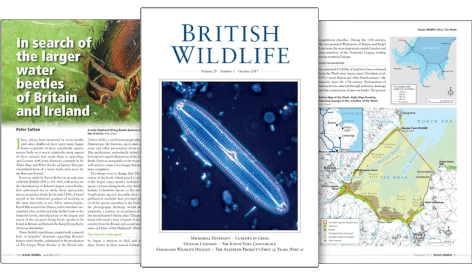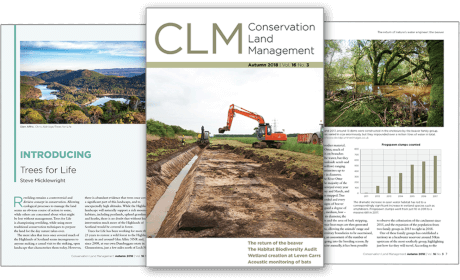![Invasive Species and Global Climate Change Invasive Species and Global Climate Change]()
Click to have a closer look
About this book
Contents
Customer reviews
Biography
Related titles
About this book
This book addresses topics related to the impact of invasive species including biosecurity, demographics, species diversity and food security. It is meant for researchers, upper-level students, and policymakers and provides a factual basis for the underlying science and a discussion of that information with respect to current and future impacts and possible solutions. This book explores the nexus of climate change and biological invasions, and resulting impacts (biological and economic) and assesses ways to reduce vulnerability and increase the resiliency and sustainability of managed and unmanaged ecosystems. The book has three parts, focusing on (1) the dimensions of the problem; background and science; (2) case studies; (3) Management: detection, prevention, control and adaptation. This revised edition examines a wide range of topics and regions, the underlying science, examples (case studies) from around the world, and ways and means to recognize, manage and control the consequences. It includes new cases and new threats; for example, a chapter summarizing case studies regarding climate change and invasive species that are also disease carriers (e.g. ticks and Lyme disease).
This book is of interest to academics, researchers and students studying climate change and invasive species. Those interested in the environment and ecology, land managers, policymakers, agronomists, federal and state departments of natural resources, climate change activists, and public health professionals.
Contents
Part 1. The Dimensions of the Problem: Background and Science.
Chapter 1: Communicating the Dynamic Complexities of Climate and Ecology; Species Invasion and Resource Changes.
Chapter 2: Climate change and plant pathogen invasions.
Chapter 3: Analysis of Invasive Insects: Links to climate change.
Chapter 4: Climate Change, Plant Traits, and Invasion in Natural and Agricultural Ecosystems.
Part 2. Case Studies.
Chapter 5: Non-native Species in Antarctic Terrestrial Environments: The impacts of climate change and human activity
Chapter 6: Synergies between Climate Change and Species Invasions: Evidence from Marine Systems
Chapter 7: Ragweed in Eastern Europe.
Chapter 8: Climate Change and Alien Species in South Africa.
Chapter 9: Climate Change and ‘Alien Species in National Parks’: Revisited.
Chapter 10: Invasive plants in a rapidly changing climate: an Australian perspective.
Chapter 11: Invasive species of China and their responses to climate change.
Part 3. Management: Detection and Prevention.
Chapter 12: Identifying invasive species in real time: Early Detection and Distribution Mapping System (EDDMapS) and other mapping tools
Chapter 13: Global Identification of Invasive Species: The CABI Invasive Species Compendium as a Resource.
Chapter 14: The Biogeography of Invasive Plants – Projecting Range Shifts with Climate Change
Chapter 15: Identifying Climate Change as a Factor in the Establishment and Persistence of Invasive Weeds in Agricultural Crops.
Chapter 16: Assessing and managing the impact of climate change on invasive species: the PBDM approach.
Part 4. Management: Control and Adaptation.
Chapter 17: Climate, CO2 and Invasive Weed Management.
Chapter 18: Early Detection and Rapid Response: A Cost Effective Strategy for Minimizing the Establishment and Spread of New and Emerging Invasive Plants by Global Trade, Travel, and Climate Change.
Chapter 19: Adapting to Invasions in a Changing World: Invasive species as an economic resource
Customer Reviews
Biography
Lewis Ziska is an Associate Professor in the Environmental Health Sciences at the Mailman School of Public Health at Columbia University. After graduating from the University of California, Davis, he began his career as a Smithsonian fellow, and then took up residence as the Project Leader for global climate change at the International Rice Research Institute in the Philippines before a 24-year career at the USDA’s Agricultural Research Service. He has worked primarily on documenting the impact of climate change and rising carbon dioxide levels on: Crop selection for CO2 responsiveness to improve production; Climate and agronomic pests, including chemical management; Climate, plant biology and public health impacts on food security with a focus on nutrition and pesticide use. Dr Ziska is a contributor to the 2014 International Panel on Climate Change (IPCC) report (Food Security Chapter) and is a contributor to the AR6 report. He is also a contributor to the 2014 and 2018 National Climate Assessment (NCA) (Public Health Chapter and Air quality chapter respectively); and The Impacts of Climate Change on Human Health in the United States: A Scientific Assessment. His most recent book is: Agriculture, Climate Change and Food Security in the 21st Century: Our Daily Bread, through Cambridge Scholars publishing.
By: Lewis H Ziska(Editor)
352 pages, b/w photos, b/w illustrations, b/w maps, tables
"Climate change is very much a current topic for debate. What this 352-page book explores is the link between climate change and the rise of invasive species – how both interrelate, so altering global commerce with the subsequent introduction of unwanted species into new geographical areas. The range of invasive species covered includes several plant species of less relevance to professional pest managers, however the change in the distribution of insects is well covered. Vector-borne diseases spread by such insects as mosquitoes and flies are of particular concern, with sections covering malaria, dengue, Lyme disease as well as hantavirus, spread by rodents."
– Frances McKim, Pest Magazine
"The changing climate of the globe has significant implications for the ecology of organisms that inhabit Earth's biomes. One pressing question is how nonnative and invasive species will respond to these changes. If invasive organisms are generally going to be favored in new climates and environmental conditions, then governments and land managers in many areas will need to develop management plans to avoid the worst of the impacts. In this new book, editors Ziska (USDA) and Dukes (Purdue Univ.) have assembled an international group of experts to analyze the topic from different angles. The 20 chapters are divided into four sections that review the problem, present case studies to highlight key topics, discuss detection and prevention approaches for managers, and present control and adaptation strategies for managers. The wide range of organisms and topics covered is appropriate for this important and complex issue. The book will be a valuable resource for students, faculty, land managers, and policy makers."
– R. B. Pratt, California State University – Bakersfield








































